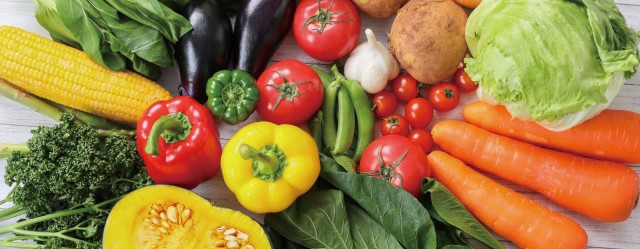
On August 27 2024, the ‘2nd Discussion on Japan’s Front-of-Package Nutrition Labeling in 2024’ (in Japanese) (hereinafter referred to as the Discussion) was held. In this issue, we would like to summarize the main topics at that occasion. The two topics discussed on the main agenda were the permissibility of labeling the state of the product at the time of intake, and labelling formats.
Regarding the labeling of foods with different nutritional values at the time of sale and intake.
In Japan’s Food Labeling Standards, nutrition facts tables shall indicate the amount of nutrients of an edible portion in the condition in which the product is sold.
On the other hand, Japan’s version of the front-of-package nutrition labeling will require that for products where there is a deviation between the amount of nutrients at the time of sale, and at the time of consumption (Ex: “foods extracted with water”, “foods in which water is used to remove salt”, “foods that are boiled and drained”, “foods to which milk is generally added” and “seasonings for which cooking methods are indicated”), it is necessary to consider allowing to label the state of the product at the time of intake on nutrition facts table in addition to labeling the state of the product at the time of sale, provided that the standard cooking method is also indicated and that documents that provide a rational basis for the labeled values are kept.
On this point, at the 2nd Discussion, in addition to the opinions expressed at the 1st discussion (n.b: both sources are in Japanese), some overseas examples were introduced, and opinions were exchanged on the permissibility of labeling the state of the product at the time of intake.
During the discussion, three opinions were raised:
-‘It would be better to consider such labelling only for “foods extracted with water”, “foods in which water is used to remove salt” and “foods that are boiled and drained”’;
-‘In the case of foods to be consumed by adding only one type of food to the condition at the time of sale, front-of-package nutrition labelling may be appropriate if the cooking process is not considered to be complicated.’ and;
– ‘It would be better to allow front-of-package nutrition labelling for foods that can be prepared and consumed in a greater variety of ways, in addition to the original preparation method on which the labelling is based.’ These issues will be further discussed on the 3rd discussion.
Reference: Document 2: Regarding the labeling of foods that cause deviations from the quantity at the time of intake (2) (in Japanese).
What formats for Japan’s front-of-package nutrition labeling?
The formats for Japan’s front-of-package nutrition labeling still needs to be considered, focusing on the following points in the ‘Direction for consideration of front-of-package nutrition labelling in Japan’ (in Japanese).
- The nutrients to be labeled must be equivalent to the mandatory labeling for calories, protein, fat, carbohydrates, and sodium (converted to salt equivalent
). - In addition to the amount of target nutrients, the percentage of the relevant amount in the standard values for the labeling of nutrients must be labeled.
- The food unit must be based on the amount of one serving of the food and the amount per one serving must be labeled.
- It should be regarded as a voluntary labelling initiative, and certain rules must be necessary.
At the 2nd discussion (in Japanese), requirements (draft) for formats for the front-of-package nutrition labeling (in Japanese) were presented and the contents were discussed, referring to the results of a direct survey conducted with general consumers, nutritionists and food-related business operators at the meeting on initiatives for easy-to-understand nutrition facts held in 2023.
In the discussion, the following opinions were raised:
-‘Regarding the standard values for the labeling of nutrients, the wording itself does not necessarily need to be included in the labelling, but it does need to be clearly stated what the percentages mean.’
-‘For food units, they do not have to be included in the logo package, but they should be clearly indicated in the proximity. However, they do not have to be so when using estimated values.’
-It was also stated that the design should be mainly based on the five items of nutrition facts (energy, protein, fat, carbohydrate and salt equivalent), and that the third discussion should continue to consider the case for labelling complementary nutrients and other ingredients (vitamin C, calcium, dietary fibre and so on).
Further discussions on Japan’s front-of-package nutrition labeling are scheduled to hold a total of five meetings in 2024, and guidelines are expected to be presented in February 2025 or later, clarifying the position in the Food Labeling Standards. Since this matter is considered to be relevant to many food-related business operators in Japan, we recommend that those of you who are thinking about exporting food products to Japan keep a close eye on future developments as well and read through the materials that will be made public.
Share/Like/Follow:
Newsletter Signup
We issue monthly e-newsletters, which provide you with the latest updates on food labeling/regulations in Japan.
If you want to make sure to not miss any issue, please click below.
Related Service
Research Services on Ingredients & Food Labeling -For the Japanese Market-
We verify the conformity of ingredients and additives with the standards for use in Japan based on specifications such as formulation lists. We also verify the conformity of the proposed labeling of ingredient names, nutrients, etc. with the labeling standards based on specifications such as formulation lists.
Label bank Co., Ltd. Regulatory Review and Development
Born in Japan. Putting her previous professional experience in quality control for the food manufacturing industry to good use, she engages principally in research and review works related to food ingredients/additives for import products, while also providing support consulting matters on labeling, additives permissibility, food standards.






